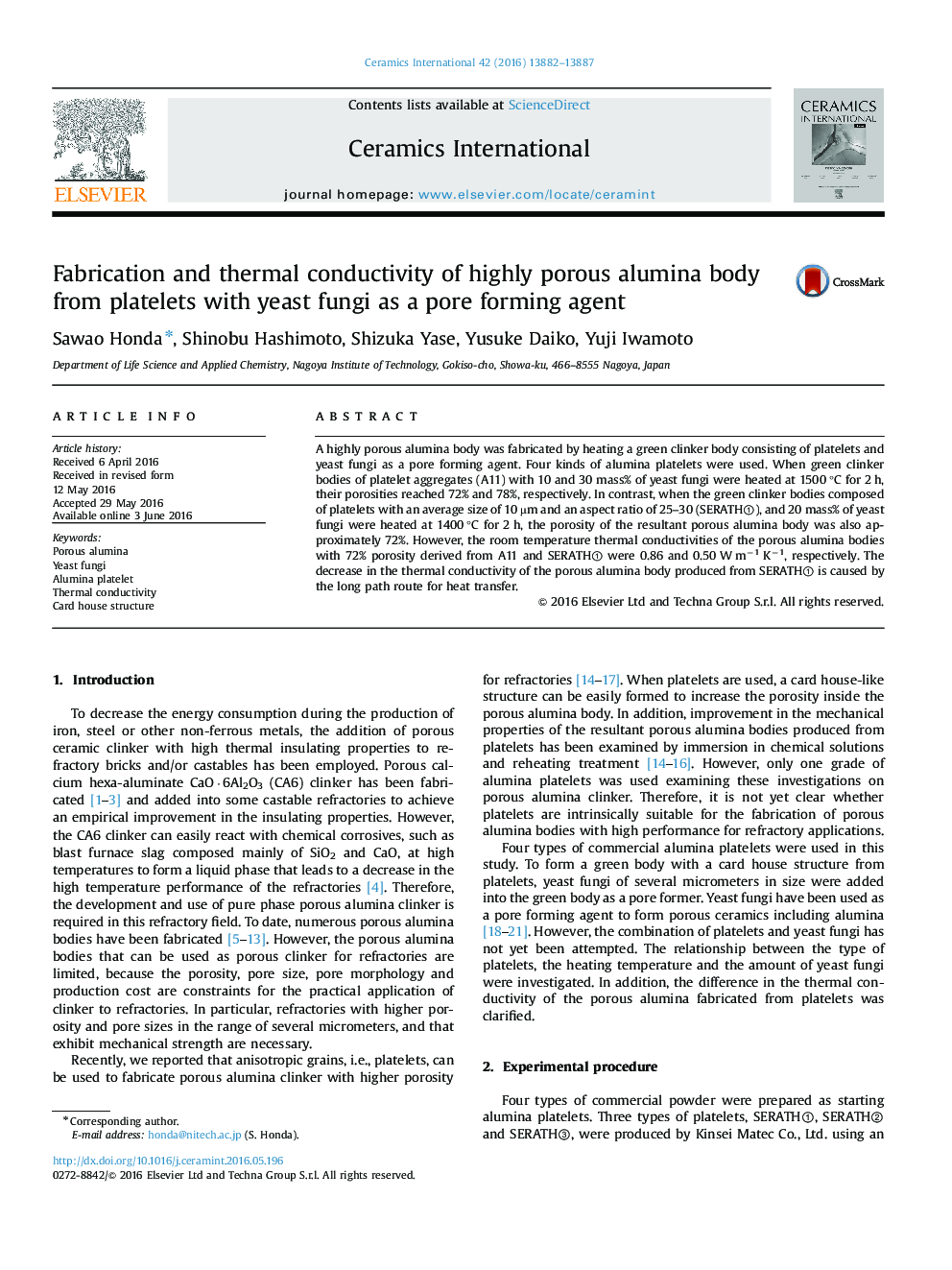| Article ID | Journal | Published Year | Pages | File Type |
|---|---|---|---|---|
| 1458555 | Ceramics International | 2016 | 6 Pages |
A highly porous alumina body was fabricated by heating a green clinker body consisting of platelets and yeast fungi as a pore forming agent. Four kinds of alumina platelets were used. When green clinker bodies of platelet aggregates (A11) with 10 and 30 mass% of yeast fungi were heated at 1500 °C for 2 h, their porosities reached 72% and 78%, respectively. In contrast, when the green clinker bodies composed of platelets with an average size of 10 µm and an aspect ratio of 25–30 (SERATH①), and 20 mass% of yeast fungi were heated at 1400 °C for 2 h, the porosity of the resultant porous alumina body was also approximately 72%. However, the room temperature thermal conductivities of the porous alumina bodies with 72% porosity derived from A11 and SERATH① were 0.86 and 0.50 W m−1 K−1, respectively. The decrease in the thermal conductivity of the porous alumina body produced from SERATH① is caused by the long path route for heat transfer.
